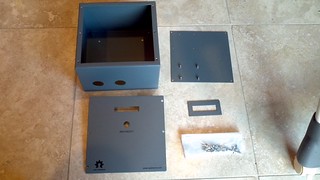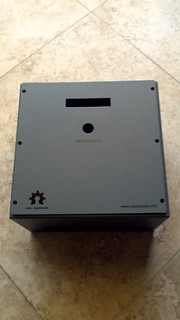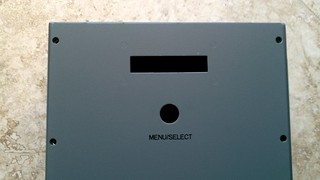Thanks for the OpenEVSE plus kit Chris! Actually seeing the board in real life makes me realize just how small it is, it's a work of art. I appreciated very much that the display and major board components were already soldered! I have a couple questions. The first is my button isn't doing anything when pressed. I'm using the supplied jumper cable connecting ground through the switch on the NO pin. I've tested voltage, etc. and everything appears to be correct. Any tips on how to troubleshoot this?
Hopefully I didn't miss something but my LEAF is immediately starting to charge when connected to the OpenEVSE instead of obeying the charge time.
Install went well. A few tips I have. If you are going to put the button on the front, consider the length of the wire and it's position relative to the hinge so that you can open the box without worrying about it. As has been noted by others, be careful of the back plate mounting points, need enough room for the nuts.
Not sure if you are going to be building more kits but I've got some suggestions for future ones.
I only got two small screws for mounting the LCD. I also needed screws for mounting the relay and the ground bar, have enough nuts but not enough screws

The instructions on the site should provide guidance on the proper placement of the ferrite bead, I nearly forgot mine and then didn't have enough extra wire to loop through it a couple times. And also on where to install the MOVs. I nearly forgot these as well and ended up putting them on the OpenEVSE AC input terminals.
Additional wire connectors would be helpful. Small terminals for connecting to the button and something for attaching the current transformer. Butt connector for the ground on the MOVs.
I think there has to be some better fuse holders that don't require soldering

Maybe these? http://www.digikey.com/product-detail/en/0031.2304/486-1745-ND/641187" onclick="window.open(this.href);return false;
Please label the version of board, for example OpenEVSE Plus v1
Throwing in a 5-15p would be nice too, for example: http://www.dale-electric.com/products/search?k=5266-C" onclick="window.open(this.href);return false;












